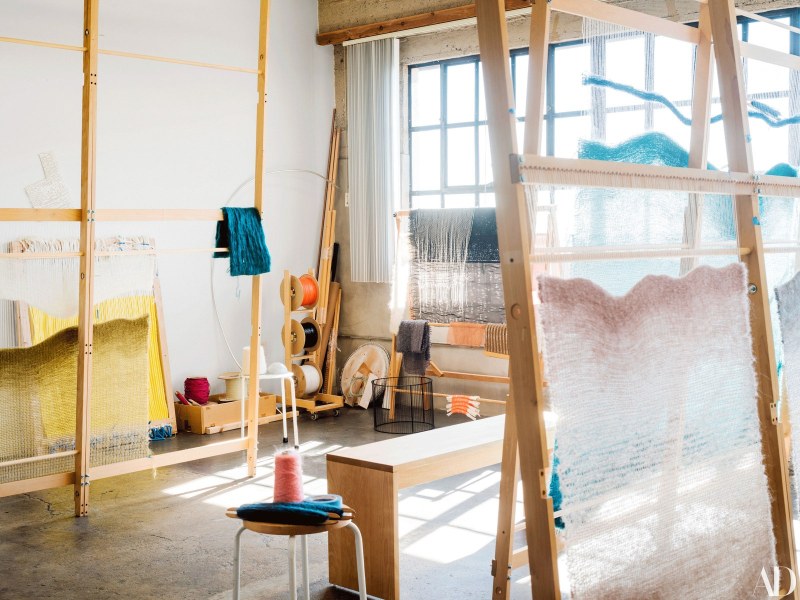Textile Artist Mimi Jung Invites AD Into Her Airy Los Angeles Studio
Jung pushes age-old techniques to their limits
At Mimi Jung’s Los Angeles studio, several looms reveal hundreds of hours of work. In one weaving, gauzy mohair seems to creep across the weft, like a live edge. In another, highlighter-yellow rope threads through thick poly-cord. “I can work an entire day on just two inches,” she says of her slow, solitary practice. Though the textile artist has long been realizing commissions for the likes of Yabu Pushelberg, Philippe Malouin, and Jamie Bush, she’s now stepping out from behind the scenes. On the heels of a group exhibition, curated by Broached Commissions, at Australia’s National Gallery of Victoria, Jung is pushing her craft to its sculptural limits. A new series called Fallen Fence combines paper and poly-cord into textural, wall-mounted topographies. Meanwhile, she’s begun casting her weavings in glass, fusing laser-cut slabs to yield thick sheets patterned with bubbles and squiggly cavities.
Jung, a South Korean immigrant who grew up in New York and studied fine art at Cooper Union, came to weaving by accident. In 2011 she enrolled in a machine-knitting class only to learn it was canceled a few days in advance. The program instead put her in a weaving class. In no time, she was hooked.
“I immediately compared it to painting,” recalls Jung, who quickly expanded from traditional fibers such as wool and cotton into unexpected materials like mohair, which lent her works a feathery transparency. “A loom is essentially a canvas; you’re just working in a linear way.” The pace of weaving, if initially maddening, soon proved soothing. “It slows everything down, so you’re really able to codify your intentions.” As Jung explains, most of her work connects to “the space in between,” an idea that nods to her experience as an immigrant and poetically sums up her chosen craft. “The way weaving is done, it only exists between the warp and the weft.”

